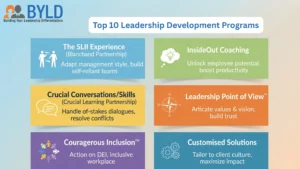
What is Motivation? Everything You Need To Know
- Our Subject Matter Experts
- December 15, 2023
- 7:20 am
- No Comments

Article Content:-
• Introduction
• What is Motivation?
• What are the Types of Motivation?
• 5 Importance of Motivation in the Workplace
• 6 Components of Motivation at the Workplace
• Tips to Improve Your Motivation at the Workplace
• Factors Responsible for Low Motivation at the Workplace
• Various Theories of Motivation
• Conclusion
• FAQs Related to Workplace Motivation
Introduction
Motivation, the invisible force that propels individuals toward their goals, holds the key to unlocking human potential and drives success in personal and professional realms. Understanding and harnessing the power of motivation is pivotal for fostering a thriving environment.
Let us embark on this enlightening journey into the core of motivation. This odyssey aims to empower individuals and organizations alike by decoding the intricacies of this potent force and illuminating the path to a more motivated and accomplished future.
What is Motivation?
Motivation serves as the heartbeat of human endeavors, dictating the direction of our actions and determining the level of commitment to our aspirations. Whether fueled by internal desires or external incentives, motivation acts as a catalyst, instigating momentum and perseverance. In the intricate dance of personal and professional growth, recognizing and comprehending the nuances of motivation becomes paramount.
What are the Types of Motivation?
Understanding the various types of motivation provides a nuanced view of what drives individuals and shapes their behaviors in different contexts. Each type plays a unique role in influencing actions, and recognizing these dynamics is crucial for fostering a motivational environment that caters to diverse individual needs.
• Intrinsic Motivation:
Intrinsic motivation originates from within an individual and is driven by personal satisfaction, enjoyment, or a sense of fulfillment derived from the task itself. This motivation program is characterized by an internal desire to engage in activities for the inherent joy and satisfaction they bring. This form of motivation often leads to sustained efforts, as individuals find genuine pleasure in the process of achieving goals.
• Extrinsic Motivation:
Individuals driven by extrinsic motivation engage in activities with the aim of gaining external benefits or avoiding negative consequences. While extrinsic motivation is effective for short-term goals, it cannot help in fostering a long-term commitment or genuine passion for the task.
• Achievement Motivation:
Achievement motivation centers on the desire to excel and finish challenging tasks. Individuals with high achievement motivation set ambitious goals, seeking personal improvement and success. This type of motivation program is prevalent in environments that encourage goal-setting and recognize individual accomplishments.
• Affiliation Motivation:
Affiliation motivation revolves around the need for social interaction, companionship, and positive relationships. Individuals with a strong affiliation motivation thrive in collaborative environments and are motivated by the prospect of building meaningful connections with others.
• Power Motivation:
Power motivation is characterized by the desire to influence, lead, or have control over others. Individuals with high power motivation seek positions of authority and are driven by the opportunity to impact decisions and outcomes. This form of motivation program is often observed in leadership roles.
• Fear-Driven Motivation:
Fear-driven motivation emerges from the avoidance of negative consequences or repercussions. It propels individuals to take action out of fear of failure, criticism, or adverse outcomes. While fear-driven motivation can prompt immediate action, it may not sustain long-term commitment.
• Attitude-Based Motivation:
Attitude-based motivation is rooted in an individual’s positive or negative perceptions of a task or goal. A favorable attitude can enhance motivation, making the job seem more enjoyable and achievable, while a negative attitude may hinder progress.
5 Importance of Motivation in the Workplace
Understanding the importance of motivation at the workplace underscores its role as a catalyst for individual and organizational success. Organizations that prioritize corporate training for employees create a fertile ground for employee growth, satisfaction, and sustained achievement. Let us discuss the importance of motivation as listed below.
1. Enhanced Employee Performance:
Motivated employees consistently exhibit higher levels of performance. A workforce driven by motivation tends to be more engaged, focused, and productive. When individuals find personal satisfaction and meaning in their work, they are likely to invest greater effort, leading to improved overall performance.
2. Adaptability and Resilience:
Motivated employees exhibit greater adaptability and resilience in the face of challenges. A motivation program provides individuals with the drive to overcome obstacles, learn from setbacks, and persevere in their efforts. This resilience is crucial in dynamic work environments where change is constant, ensuring the organization can navigate uncertainties effectively.
3. Positive Organizational Culture:
A culture of motivation contributes to the development of a positive work environment. Such a culture emphasizes encouragement, recognition, and a shared commitment to excellence. As employees experience a positive atmosphere, they are more likely to collaborate, communicate effectively, and contribute to a harmonious workplace.
4. Boost to Creativity and Innovation:
The motivation program fosters a conducive environment for creativity and innovation. Individuals who are driven by a sense of purpose and challenge are more likely to think outside the box, propose novel ideas, and contribute to the organization’s innovative initiatives. A motivated workforce becomes a valuable source of fresh perspectives and inventive solutions.
5. Greater Employee Engagement:
Motivated employees are inherently more engaged in their work. Engagement goes beyond mere task completion; it involves emotional commitment and a willingness to go the extra mile. Motivated individuals are proactive, enthusiastic, and actively seek opportunities for growth and development within the organization.
6 Components of Motivation at the Workplace
Understanding and integrating motivation components into the workplace contribute to a holistic approach to motivation. By addressing these aspects, organizations can cultivate an environment where employees are motivated, engaged, and poised for growth.
1. Supportive Leadership:
Leadership is crucial in fostering motivation. Supportive leaders who provide guidance, encouragement, and focus on a motivation program contribute to a positive motivational environment. Effective communication, feedback, and recognition from leaders enhance the overall motivational climate within the organization.
2. Recognition and Rewards:
Recognition and rewards serve as powerful components of workplace motivation. Acknowledging employees for their efforts, accomplishments, and contributions creates a positive reinforcement loop.
3. Meaningful Work:
The nature of the work itself plays a crucial role in employee motivation. Meaningful tasks that align with employees’ skills, interests, and values contribute to a sense of purpose. When individuals find meaning in their work, they are more likely to invest in a motivation program emotionally and remain committed to their work.
4. Clear Goals and Objectives:
Setting clear and achievable goals is essential for maintaining motivation. When employees have a clear understanding of what is expected of them and see a direct connection between their efforts and organizational objectives, they are more focused and motivated.
5. Opportunities for Growth and Development:
Motivation is sustained when employees perceive opportunities for personal and professional growth. Organizations that invest in motivation programs, Corporate Leadership Development Programs, and career advancement initiatives create an environment where individuals are motivated to enhance their capabilities and take on new challenges.
6. Autonomy and Empowerment:
Granting employees a degree of independence and decision-making authority empowers them and enhances motivation. When individuals can freely choose and make decisions related to their work, they feel a sense of ownership and responsibility, leading to increased motivation.
Tips to Improve Your Motivation at the Workplace
You can easily enhance your motivation, create a positive work experience, and achieve greater success in your professional endeavors by following these helpful tips.
• Set Clear and Achievable Goals: Establishing clear and realistic goals provides a roadmap for your efforts. Break down larger objectives into smaller, manageable tasks, allowing you to celebrate achievements along the way. Clarity in your goals enhances the efficiency of your motivation program and direction in your work.
• Create a Positive Workspace: Your physical environment can significantly impact your motivation. Ensure it is organized, clutter-free, and conducive to focus. A positive and comfortable workspace fosters a motivated mindset.
• Prioritize Tasks Effectively: Prioritizing tasks based on urgency and importance helps manage workload efficiently. Tackling high-priority tasks first provides a sense of accomplishment and boosts a motivation program.
• Seek Learning Opportunities: Embrace a mindset of continuous learning. Engaging in new challenges, acquiring new skills, or pursuing professional development opportunities can invigorate your motivation. The sense of growth and progress fuels a positive attitude towards your work.
• Establish a Routine: Having a consistent daily routine helps create structure and stability. Plan your work tasks, breaks, and personal activities in a way that aligns with your natural energy levels. A well-established routine minimizes stress and enhances the impact of a motivation program.
• Maintain a Work-Life Balance: Balancing professional responsibilities with personal well-being is essential for sustained motivation. Avoiding burnout by taking breaks, setting boundaries, and allocating time for leisure activities contributes to a healthier work-life balance.
• Stay Physically Active: You need to include regular exercise in your routine to enhance energy levels, reduce stress, and boost the overall impact of your motivation program.
• Celebrate Achievements, Big and Small: Recognizing your efforts and achievements, no matter how small, reinforces a positive mindset. Regular celebrations contribute to a continuous cycle of motivation.
• Cultivate a Positive Mindset: Foster a positive outlook towards challenges and setbacks. Cultivating a resilient and optimistic mindset helps you navigate challenges with determination and maintains motivation during tough times.
• Connect with Colleagues: It is clearly evident that maintaining positive relationships with your colleagues can contribute to a supportive work environment. Collaborate, share ideas, and seek feedback on your motivation program to foster a healthy work environment.
Factors Responsible for Low Motivation at the Workplace
Paying attention and resolving these factors can help in creating a motivated and engaged workforce. Organizations that prioritize employee well-being, growth, and recognition are more likely to create an environment where motivation thrives.
1. Lack of Clear Goals:
Unclear or ambiguous goals can leave employees feeling directionless and unmotivated. When individuals don’t understand the purpose or significance of their work, it diminishes their motivation to excel.
2. Poor Leadership and Communication:
Ineffective leadership and communication contribute to low motivation. When leaders fail to communicate transparently, provide feedback, or recognize achievements, employees may feel undervalued and uninspired.
3. Limited Growth Opportunities:
A shortage of opportunities for career growth and professional development can result in low motivation. Further, employees will stay engaged in a motivation program when they see a clear path for advancement and skill enhancement.
4. Inadequate Recognition and Rewards:
Lack of recognition and rewards for a job well done can lead to demotivation. Employees need acknowledgment for their efforts, whether through praise, promotions, or tangible rewards, to feel motivated to continue giving their best.
5. Unsupportive Work Environment:
An unhealthy work environment characterized by office politics, favoritism, or lack of collaboration can erode motivation. Employees thrive in environments that prioritize teamwork, mutual respect, and a positive atmosphere.
Various Theories of Motivation
Understanding these theories helps organizations tailor motivational strategies to fulfill various needs and requirements of their workforce. Applying a combination of these theories proves effective in creating a motivating workplace culture.
• Goal-Setting Theory: Edwin Locke’s Goal-Setting Theory emphasizes the need to establish specific and challenging goals for motivation. Clear objectives and feedback enhance the performance and efficiency of a motivation program.
• Maslow’s Hierarchy of Needs: Abraham Maslow gave a hierarchy of human needs arranged in a pyramid. The theory professed that individuals are motivated by fulfilling basic needs like physiological, safety, social, esteem, and self-actualization.
• Expectancy Theory: Victor Vroom’s Expectancy Theory posits that motivation is influenced by the expectation of a desirable outcome and the belief that effort will lead to success. It considers the relationship between effort, performance, and reward.
• Herzberg’s Two-Factor Theory (Hygiene-Motivation Theory): Frederick Herzberg introduced the idea that separate factors influence job satisfaction and dissatisfaction. Hygiene factors, like salary and working conditions, prevent dissatisfaction, while motivators, such as recognition and achievement, lead to fulfillment.
• Cognitive Evaluation Theory: Edward Deci and Richard Ryan’s Cognitive Evaluation Theory explores the impact of external events on an intrinsic motivation program. Factors like autonomy and feedback can influence an individual’s intrinsic motivation positively or negatively.
• McClelland’s Need Theory: David McClelland identified three basic needs – achievement, affiliation, and power – as key motivators. Individuals may be driven by a dominant need influencing their behavior and satisfaction at work.
Conclusion
Motivation is a multifaceted concept that significantly influences individual and organizational success. Recognizing the intricate interplay between individual needs, organizational structures, and motivational theories allows us to design tailored approaches that resonate with the unique fabric of our teams.
In the ever-evolving landscape of work, where challenges abound, motivation emerges as the guiding light, steering individuals and teams toward success. It is not merely a theoretical construct but a living force that, when harnessed effectively, transforms workplaces into thriving ecosystems of productivity, creativity, and fulfillment. As we continue this journey, let us embrace the transformative power of a motivation program and learn to utilize the full potential of individuals and organizations.
FAQs Related to Workplace Motivation
What role does recognition play in employee motivation?
Recognition is crucial for employee motivation as it validates efforts, boosts morale, and contributes to a positive work culture.
How can leaders promote motivation in remote work settings?
Leaders can foster motivation in remote settings by maintaining regular communication, setting clear expectations, and providing opportunities for virtual recognition.
Are monetary rewards the only effective form of motivation?
No, motivation is multifaceted. While monetary rewards can be motivating, factors like ample growth opportunities, effective communication, and the creation of a good workplace culture can be crucial motivators.
How can organizations identify and address factors contributing to low motivation?
Organizations can conduct employee surveys, gather feedback, and maintain open communication channels to identify and address factors leading to low motivation.
Can motivational strategies be customized for different personality types?
Yes, personalized motivational strategies, considering individual preferences and strengths, can be more effective in enhancing motivation across diverse teams.






